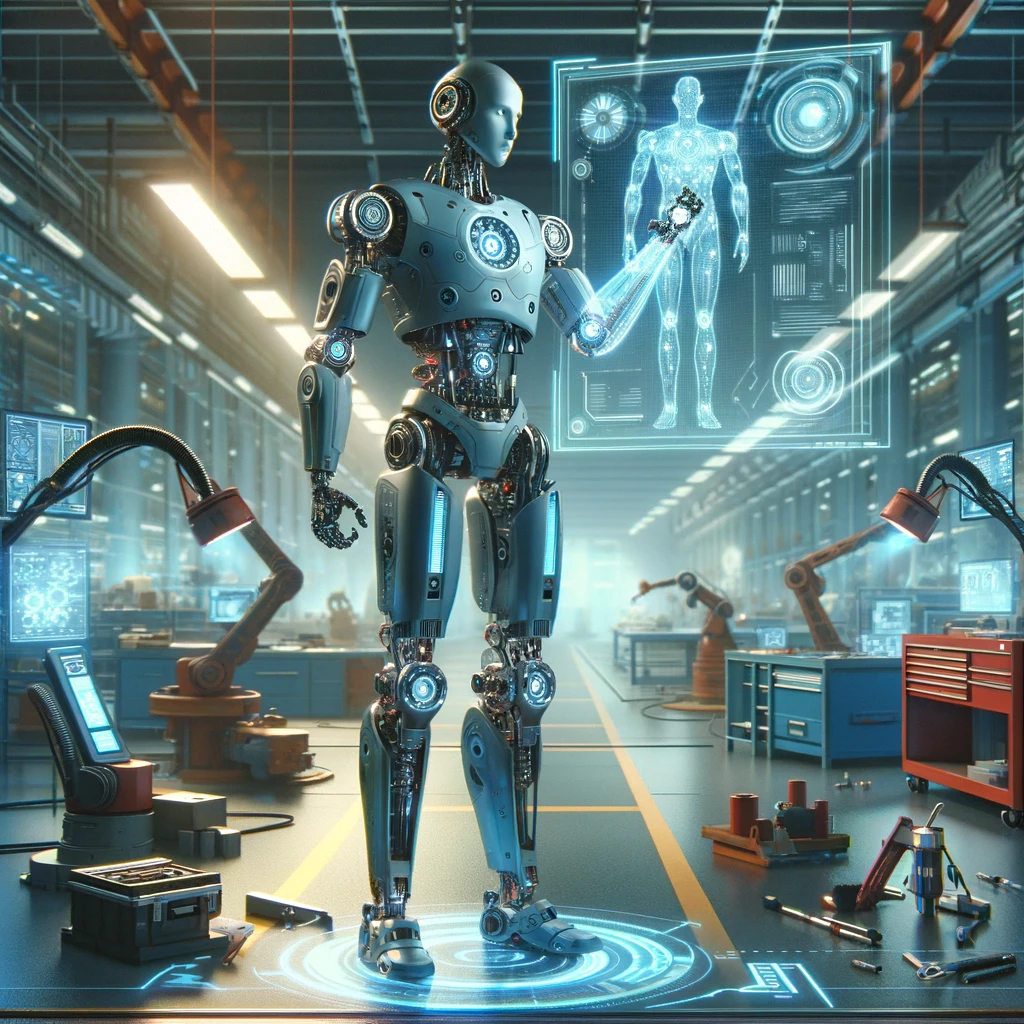Imagine um mundo onde os robôs não apenas pensam e agem por conta própria mas também podem se reparar sem qualquer ajuda humana.
This scenario, which seems to have been taken from a science fiction film, is increasingly closer to reality, thanks to advances in artificial intelligence (AI).
AI is revolutionizing many fields, but one of the most fascinating is undoubtedly self-healing in robots.
But what does this “self-healing” ability really mean and why is it so important?
As robots become increasingly present in our lives, performing tasks ranging from the most mundane to the most complex, the ability to detect and repair damage without human intervention represents a significant leap towards true robotic autonomy.
Browse the content

The Concept of Self-Healing in Robots
The idea of self-healing in robots refers to the ability of these machines to identify problems in their own systems and correct them automatically, without the need for human intervention.
Taking inspiration from nature, where living organisms heal their wounds and restore their functions, scientists and engineers are developing robots capable of performing similar feats.
This autonomy is particularly crucial for robots operating in environments that are inhospitable or dangerous to humans, such as space, the deep sea or disaster zones.
Imagine a Mars rover that can fix a circuit damaged by a sandstorm, or a search-and-rescue robot that can adjust its locomotion mechanism amidst debris.
Self-healing makes these robots not only more resilient, but also significantly expands the scope of their missions.
Artificial Intelligence: The Heart of Robotic Self-Healing
Artificial intelligence is the beating heart behind robots’ self-healing capabilities.
Using advanced algorithms, robots are able to continuously monitor their condition, detect abnormalities and diagnose problems.
But how exactly does this work?
Let's dive into a practical example.
Imagine a robot equipped with sensors that monitor the integrity of its parts. When it detects a fault, such as a loose circuit or a worn component, the artificial intelligence system analyzes the problem, consults its database to find the best solution and performs the repair, which can involve anything from simple adjustments to replacing parts using 3D printing.
A fascinating example of this concept in action is the case of robots developed for space missions. These robots use AI to not only diagnose damage caused by the extreme environment of space, but also to perform critical repairs, ensuring their continued operation away from the direct reach of humans.
Innovative Technologies and Materials
Self-healing in robots would not be possible without the development of innovative materials and advanced technologies.
Shape memory materials, for example, can return to their original shape after being damaged, while self-healing polymers can repair cuts or tears in their structure.
3D printing plays a crucial role in this scenario, allowing robots to create replacement parts or tools needed for repair.
Imagine a robot equipped with a 3D printer that can manufacture a defective part on demand, using only the resources available in its environment. This capability not only increases the resilience of robots but also makes them incredibly adaptable to unforeseen situations.
Challenges and Limitations
Despite impressive advances, the journey to fully self-healing robots still faces significant challenges.
Technical issues, such as the complexity of autonomous diagnostic and repair systems, are just the tip of the iceberg.
There are also ethical and safety concerns, especially regarding the autonomy of robots and the possibility of malfunctions during the self-healing process.
Furthermore, the efficiency of self-healing materials and the capabilities of diagnostic technologies are still under development.
Continued research is essential to overcome these obstacles, with scientists and engineers exploring new frontiers in artificial intelligence, advanced materials and robotics.
The Future of Self-Healing Robots
Despite these challenges, the future of self-healing robots is bright and full of possibilities. Continued research in artificial intelligence, innovative materials, and systems engineering promises to overcome many of these limitations.
Advances in AI and Machine Learning
As artificial intelligence and machine learning continue to advance, robots will become increasingly adept at self-healing.
Deep learning algorithms, for example, can improve the ability of robots to diagnose problems with incredible accuracy and learn from each repair performed, making self-healing systems more efficient and reliable over time.
New Generation Self-Healing Materials
The development of new self-healing materials, capable of repairing more significant damage or adapting to different types of damage, is also a promising field.
Researchers are exploring everything from polymers that regenerate themselves to metals that can “heal” microscopic cracks.
Expanded Applications
The applicability of self-healing robots will expand beyond space missions and rescue operations. In industry, for example, self-healing robots could mean production lines that never stop, reducing costs and increasing efficiency.
In healthcare, self-healing medical robots could perform procedures in challenging environments where human presence is limited or risky.
Conclusion
The journey towards fully self-healing robots is both challenging and exciting. Artificial intelligence is not only at the heart of this revolution, but also the key to unlocking its full potential.
As we overcome technical and ethical obstacles, we are opening the door to a future where robots not only think and act autonomously but also maintain and repair themselves, promoting unprecedented advancement in many areas of our lives.
While we are still in the early stages of this journey, the progress so far suggests a promising future. The combination of continued research, innovation and collaboration across disciplines will be crucial to realizing the vision of truly self-healing robots.
With artificial intelligence as our ally, we are on the cusp of a new era in robotics, an era of machines that are resilient, adaptable and ultimately more integrated into our daily lives than ever before.
